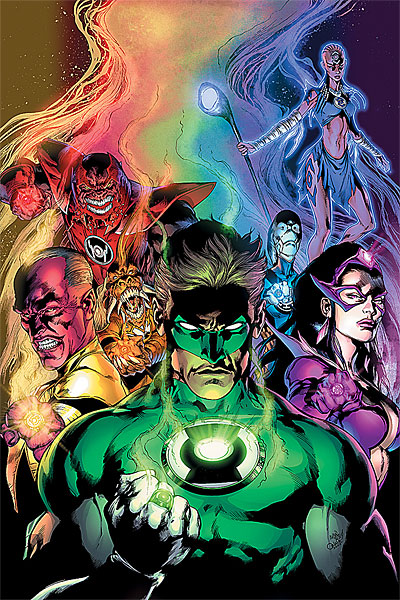Blackest Night #6 (of 8)
By Andy Frisk
December 30, 2009 - 18:52
DC Comics
Writer(s): Geoff Johns
Penciller(s): Ivan Reis
Inker(s): Oclair Albert and Joe Prada
Colourist(s): Alex Sinclair
Letterer(s): Nick J. Napolitano
$3.99 US
The situation looked incredibly bleak at the end of last issue. Superman, Wonder Woman, Green Arrow, and Superboy all became Black Lanterns. Each one of these heroes died and were resurrected at some point in the past, thus making them susceptible to Nekton’s power. Hal Jordan/Green Lantern and Barry Allen/The Flash also died and were resurrected, but as we’ve been shown in Flash Rebirth (at least when the issues of that series actually get published), The Flash is capable of outracing death itself. Meanwhile, and most importantly for the good guys, Ganthet, the only really likable (and levelheaded) Guardian, joins the fight “not as a leader removed, but as another living being fighting for his life.” Ganthet replicates Jordan’s ring and…well, you can figure out the rest. It appears that not only Green Lantern rings can replicate, but the rest of the Color Corps rings can too, and anyone who emotionally fits the bill can be deputized for 24 hours into each respective Corps…are you ready for Barry Allen, Lex Luthor, and a few choice others to become Lanterns?
 |
Perhaps the best chapter of Geoff Johns’ Blackest Night saga since Blackest Night #3 unfolds and definitely begins to bring the light back to the DCU. Only the combined light of all the Corps can repel the Black Lantern, Nekron, and The Black Hand, and only the newly deputized heroes and villains of Earth (the cornerstone of the DC Multiverse) will be able to shed this light. Johns tepidly begins to approach the profundity of theme his previous Green Lantern epic, The Sinestro Corps War, displayed by uniting hero and villain against a greater evil, the darkness of unchecked and rampant death, decay, and hopelessness. It’s almost as if the point being plead is that men and women of all political, emotional, and moral values need to unite and use their powers to repel the darkness. This has actually happened on occasion in real life history. The United States and Soviet Union allying to defeat the evil of Nazism is one example of this. So, while poignant, Johns’ uniting of the hero and villain to battle a greater evil isn’t exactly profound. What he does with these characters in the post-Blackest Night DCU will be more interesting (that is if he remains head writer on the various titles he’s now penning).
Reis and company’s artwork continues to be strong and arresting. Their renderings of a Black Lantern Superman and Superboy are pretty terrifying, but perhaps the darkest and most psychologically horrifying Black Lantern is Wonder Woman. As we recently saw in Blackest Night: Wonder Woman #1, Diana is the strongest personification of love amongst the heroes of the DCU. To see that shining beacon of love corrupted is dreadful, and Reis’ version of her pre and post the breaking of the Black Ring’s hold on her is particularly scary and comforting respectively.
Blackest Night grinds on, but things are starting to look up for our heroes and their universe(s). In the words of Blue Lantern Saint Walker, and now Barry Allen, we truly can start to have hope that “all will be well.”
Rating: 8/10
Related Articles:
Blackest Night: Directors Cut
Blackest Night: Finale and Final Words
Blackest Night JSA #3
Blackest Night #7
JSA Blackest Night #1 of 3
Blackest Night Wonder Woman #2 of 3
Blackest Night #6 (of 8)
Blackest Night: The Flash # 1 (of 3)
Blackest Night: Wonder Woman #1 (of 3)
Blackest Night #5
